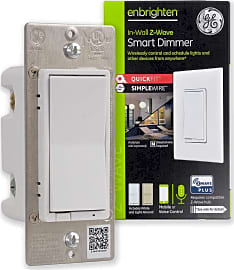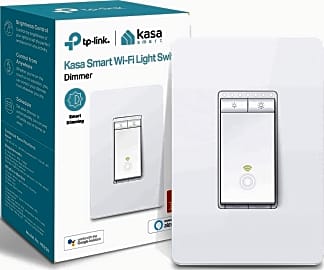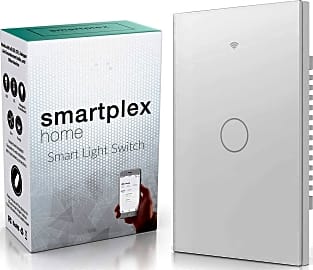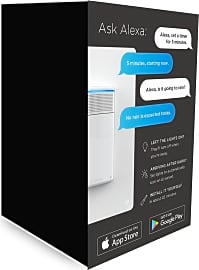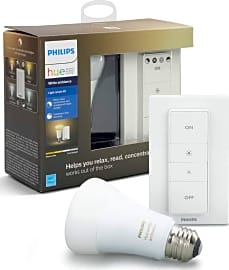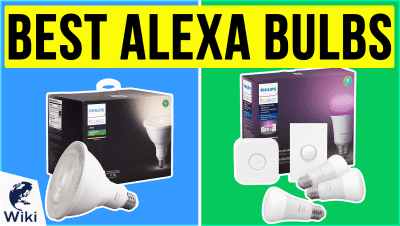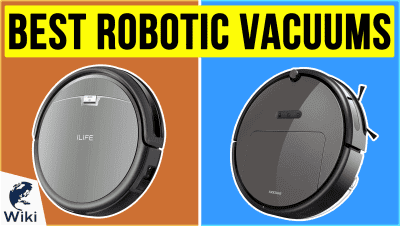The 10 Best WiFi Light Switches

This wiki has been updated 34 times since it was first published in December of 2016. If you're venturing into a dark hallway, carrying groceries, or are on vacation, one of these Wi-Fi light switches can help you by turning a bulb on when it senses you, or turning on and off on a schedule to deter potential burglars. They're available for a wide range of purposes and with varying capabilities. But if any hardwiring is required, you should enlist the help of a licensed electrician. When users buy our independently chosen editorial picks, we may earn commissions to help fund the Wiki.
Editor's Notes
November 19, 2020:
As is often the case in these smart-technology categories, it was a very busy round of updates. While the iClever BS06 and Moes Smart were both removed due to availability issues, we also went ahead and removed Sonoff TH16, Sonoff Pro R2 and eMylo Relay — three relay-based solutions that would require significant electrical know-how, and possibly the addition of new wires and/or a junction box, to install properly and invisibly. Some people might still find that these options provide a feasible and affordable solution, but we felt that the majority of users shopping in this category would be better served by a selection of switches that are simple to substitute for your home’s existing hardware, during a renovation.
We almost replaced the Leviton DW6HD-1B, a 600-watt dimmer, with the Leviton DW1KD-1BZ, a 1,000-watt dimmer, but ended up settling on the Leviton DWVAA-1BW, which offers the same power rating as the pick it replaced, but features a built-in microphone that allows for integrated Amazon Alexa functionality. The Philips Hue 466706 managed to maintain its spot on our list, but we’re now featuring an upgraded version that’s available to California residents. And, the Kasa Smart HS200 was replaced by the Kasa Smart HS220 — which appears to be close to the same switch, just a dimmable version. Note that neither the HS200 nor the HS220 are capable of three-way switching, so you’ll need to skip straight to the company’s HS210 model for that.
Some of our other new additions this time around include the GE Enbrighten 47193 — which is 20% smaller than the company’s previous model and features five color options; the Smartplex Modern Day — a sleek line of tempered-glass options that can control one, two or three loads independently, from a single-gang box; and the Lutron Caseta — which comes with a remote control that can be wall-mounted, effectively adding a three-way switch to your home with next to no installation needed.
Beyond picking a switch at an appropriate price point that appeals to your sense of style, there are a few more considerations worth making while you're shopping in this category:
Compatibility: While more and more of these switches are becoming compatible with more and more smart-home systems, universal compatibility is still far from a standard in this category, so make sure the switch you're considering jives with the smart-home system you're using. If you come from an Alexa household, you may be interested in checking out our list of Best Alexa Switches.
Three-Way Switching: Some models in this category are capable of three-way switching, and even three-way dimming – take, for example, the Leviton DWVAA-1BW – but plenty still are not — take, for example, the Kasa Smart HS220. So, if it's something that you need, double check to make sure that the hardware you're considering is up to snuff. The Lutron Caseta might also be an interesting option worth considering, as it comes with a wireless remote that can be wall mounted with a separately purchased bracket, presenting a simple and affordable alternative to roughing in a new three-way switch in your home.
Neutral Wires: Most options in this category need one at the point of installation, and not all existing switches (in the case where switch-loop techniques are applied) will have one in their electrical box. It might be a pain in the neck, but it's worth opening the switch in question (with the assistance of a licensed electrician, if necessary) to see whether you've got one before you make a purchase, because it'll almost certainly cost you more than the switch to get a new neutral wire run there after the fact. If you need a switch that doesn't require a neutral wire, one solid selection to think about is the Lutron Caseta.
June 24, 2019:
Not everyone wants to jump on the smart home bandwagon, and that's understandable; proprietary bridges are yet another device to purchase and create one more networking device to deal with. These switches operate on your existing 2.4-gigahertz wireless band, so they won't clog anything up and are essentially as secure as the rest of your network. The Wemo and TP-Link Kasa are simple, inexpensive, and reliable, and for replacing the average in-wall switch, they're generally the best choices. But your semi-smart home is your canvas, so there are a lot of ways to streamline it and get it just how you want it. The Moes is a good choice if you're hooking up a ceiling fan, and it has a classy, touch-sensitive face that few others can match. If you are willing to make a little bit more of an investment, consider the Philips Hue, as it's very powerful, but you'll have to spring for all new bulbs. Then there's Leviton, whose switches are more expensive than most others, but also come in a wider variety.
We've highlighted a few by Sonoff and eMylo that don't have easily accessible toggle switches, because they're designed to be used primarily over the Wi-Fi signal. Especially interesting is the Sonoff Pro, which can manage 4 different fixtures at once. All three of these are also suitable for use with other appliances, as long as they fall within the current limits.
For those who aren't willing or able to undertake the task of opening an electrical box and installing equipment -- for example, renters -- there are a few great options. Levitron makes a standard and dimmer plug-in model, and iClever's outdoor option is perfect for holiday lights or other outdoor installations. Possibly the most useful plug-and-play device, though, is Kasa's smart power strip, which lets you control multiple devices at once using its combination of AC and USB electrical connectors.
Finally, light switches are among the few electrical projects that homeowners can often tackle safely and without much difficulty. But you will need a neutral wire available in the switch box to make these work. So if you're working with an older setup, you'll need a licensed electrician to come out and pull a neutral wire -- that is not the type of task suited for the average DIY handyworker. If you just don't feel great about doing the electrical work yourself, don't hesitate to call a professional. And if you do decide to do on your own, be certain to shut off power at the breaker first, follow all additional safety protocols, and use good technique to ensure that nothing will short out or otherwise become damaged with regular use.
The Many Advantages Of WiFi Light Switches
If your kids like to play in the back yard late in the afternoon, schedule your lights around their play to turn on at dusk.
If your electricity bill regularly shocks you into calling the power company and asking if there has been a mistake, you may be wasting energy in unknown places. Research has found that the United States is only 42 percent energy efficient, meaning they waste over half of their power. Most of the loss can be attributed to the industrial sector, but light bulbs (something residential and commercial buildings both have) are a big part of the problem. If you forget to turn off a light and leave your house for the day, or even for a long trip, you have no way of turning it off, and are throwing money down the drain. A WiFi light switch allows you to control your lights remotely from your smart phone or computer, wherever you are. So, you can turn them off when you're on the plane, leaving for your vacation.
WiFi light switches may help prevent burglaries, too. Some studies suggest that crime rates are lower on well-lit streets. It doesn't take a far stretch of the imagination to see how burglars may also pass by well-lit homes. While you may not want to keep your lights on all night, you could use your WiFi light switches to activate bulbs at strategic times. Scheduling lights to go on around the house throughout the night can make it look to the outside as if people are home, even when you aren't.
You can also use your switches to make your lifestyle and schedule a little easier. If you tend to get home after dark, you can program your WiFi-enabled driveway and porch light to turn on at sunset. This gives you a safe, illuminated path from your car to your front door. If your kids like to play in the back yard late in the afternoon, schedule your lights around their play to turn on at dusk. If your children can see better while they play, you can prevent a lot of injuries. Let your lights compensate for your forgetfulness, too. If you're in the habit of leaving the kitchen light on after cleaning up dinner, program those WiFi lights to turn off around bedtime.
Added Features To Look For In WiFi Lighting
If you're transforming your home into a smart house, look for WiFi light switches that are designed to work with other smart devices in your home like smart light bulbs and the Amazon Echo. In fact, smart light control is one of the most common ways people use Alexa. Setting the mood for romantic dinners becomes a little easier with models that have dimming capabilities. If you don't want to keep your smart phone by your side at all times, some WiFi light switches come with at-home remotes that you can place throughout your home and use to control them.
This can help you identify the problem areas in your home where you waste the most energy.
It's important to confirm your model is compatible with your current router, but try to find one that works with all major WiFi routers, so even if you switch providers, it will still function. Should energy saving be your main reason for purchasing WiFi light switches, consider some with built-in electricity usage monitoring. This can help you identify the problem areas in your home where you waste the most energy. If you live in a multi-person household and would like to make all of your family members more energy conscious, get a model that allows for multiple users. These allow several smart phones to connect to and control the lights, and can be a great way to hold your kids accountable for their energy usage.
You don't need to worry about your WiFi light switch interrupting the aesthetic of your home, since many models feature sleek and discreet control panels that will blend into your walls. No matter how great of a job you do at monitoring your electricity use, there is always the risk of an overload blowing your circuits. Fortunately, many WiFi light switches have built-in overload protection, and will shut off if they detect an overload risk. Don't forget to explore the associated smart phone apps of each light switch, to make sure you find them user-friendly.
A Brief History Of Smart Home Automation Systems
People have imagined a home that can run itself since long before modern smart homes existed. Of course, these once only appeared in science fiction works, like the 1950 short story There Will Come Soft Rains about a house that continued to take care of itself after its residents died, and Back to the Future, where Marty McFly had a smart kitchen. Fortunately, real-life smart homes turned out to be far more convenient than creepy. But they didn't come to be overnight.
Finally, in the 1970s, a product called X10 came on the market.
In order for there to be smart appliances, there first had to be simple appliances. Before the robotic vacuum, there was just the first electric vacuum, created in 1907. Before there were smart refrigerators, there was the first self-contained refrigeration system, introduced in 1923 by Frigidaire. In the 1880s, John Henry Holmes created the first light-switch that used quick-break technology, which greatly improved the safety of electricity use in homes. Finally, in the 1970s, a product called X10 came on the market. This system used home power lines to allow several appliances to communicate with one another. Smart homes as we know them today didn't become possible until WiFi was invented in 1991. By the time WiFi was available, homes were more than ready to welcome smart automation systems. In fact, in 1984, the National Association of Home Builders had created a group advocating for smart technology in new homes.
The original smart devices were large and expensive, two issues the company Nest set out to improve upon in 2010. Started by iPod creator Tony Fadell, Nest introduced some of the first WiFi-enabled thermostats and smoke alarms. Nest prompted many of the competitors we know and patronize today, like Microsoft, Belkin, and Panasonic, to put out their own smart home systems and appliances.


